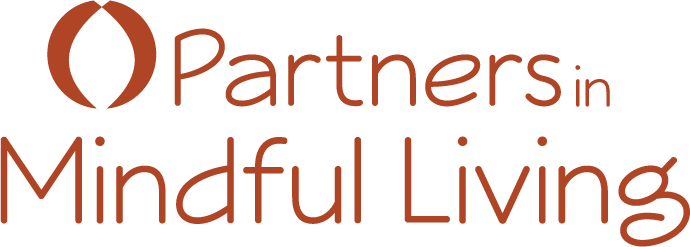
Master the art of managing yourself, not them.
May 8, 2022
People will always see the world through different lenses.
We can turn that into a problem or learn to manage ourselves like class acts when conflict rears its gnarly head.
Whether you’re at work, at home, or shopping at your local deli, you can choose how to handle the discomfort of disagreements.
You don’t have to be pissed-off to offer a different opinion or perspective. However, you do have to know how to manage yourself, rather than trying to shut someone else down or force them to agree with you.
This article is not addressing the types of conflicts that can end in a world war. That’s beyond my ability to tackle. I suppose that’s why I never thought I’d grow up to be the president of the United States. When I was little, my sites were more often set on the newly crowned Miss America, walking down the aisle, awkwardly waving at her adoring audience.
Thankfully, I’ve matured. Today my sites are mostly set on understanding how to make relationships work better.
You don’t have to keep doing what you’ve always done.
Ask yourself what it would feel like to be the only person with their act together in a room full of people having a pissing match?
Then think of the last time you engaged in an intense conflict, and somebody strongly disagreed with you or vice versa? How much would you pay to learn to manage yourself and not lose it? Instead, to feel capable of turning a potential conflict into a conversation.
Can you remember what happened at the outset of that last conflict? I’ll bet one of two things happened. You jumped in with all engines revved, ready to defend your position. Or, you thought, ‘here we go again, and it’s just not worth it.’ So, you shut up or shut down.
Your body keeps the score.
In his book, The Body Keeps the Score, Bessel Van Der Kolk calls the amygdala the brain’s “smoke detector” because it’s responsible for detecting fear and preparing your body for emergency response.
When someone or something hijacks your amygdala (the primitive, protective part of your brain that is on high alert for anything that looks even remotely dangerous), your body reacts. So, it doesn’t matter how relaxed you were a moment earlier. If your amygdala perceives a threat, your body will get ready to protect you, whether necessary or not.
I have said before that I write about what I need to learn. In this case, that has never been truer. This morning, my partner and I ‘explored’ a difference of opinion. His voice didn’t raise. I didn’t catch myself before mine did. I forgot to practice what I preach.
These days, progress means I more quickly end up laughing at the futility of my reactivity, and then we have a conversation rather than a conflict.
Now let’s explore how we can not only live through a potential conflict but instead use it to our advantage.
Use your body and breath as tools.
When facing a conflict situation, do this one thing before you open your mouth:
Slow everything down. (Instructions coming.)
To turn a conflict into a conversation, you need to manage yourself rather than shut someone else up. The best way to manage yourself is to use your physical reactions as tools rather than defenses.
If you’re in real danger, that’s a different story. But most conflicts don’t involve physical risk—they are thoughtless interactions driven by our subconscious need to be right or in control.
To use your body as a tool, practice noticing what’s happening in your body.
When you’re on high alert you’re on autopilot. Your brain floods your body with stress hormones like cortisol and adrenaline, resulting in tightness, muscle contraction, shallow breathing, increased heart rate, and sweaty palms, all in preparation for you to hightail it out.
It’s crucial to understand that even when we think we’re making sense, on autopilot, complex decision-making is impaired, as is our ability to see multiple perspectives.
Someone says or does something that challenges a tightly held belief, and your body will react whether you want it to or not. The trick is to notice what’s happening sooner rather than later.
Ideally, before you open your mouth.
And that is where mindfulness comes in.
Mindfulness is an awareness technique you can use when a conflict arises. When you’re triggered—on high alert—you’re most likely on autopilot. You need to get off autopilot, and you can do that by coming back to the present moment, being willing to feel intense feelings, and practicing some simple steps.
Once you have some practice pausing before you speak and coming back to the present moment, you can begin using three basic skills to turn a conflict into a conversation.
Slow everything down.
Slow down your movement, your breathing, and your speech. The moment you notice your body is tight is the moment you can regain control.
Breathe all the way out several times, softening your body with each out-breath. Don’t speak until you have felt your body relax.
My trick is to tell my face to get soft. When I was raising my son and occasionally on the brink of losing it, I would tell my face to soften. That was a powerful reminder to come back to the present so that I could be the parent I wanted to be. I still use this trick today.
Ask questions.
Once you’ve relaxed your body and come back to the present moment, bring curiosity into the mix.
Ask questions to understand how they arrived at their perspective and how it serves them or their community.
Once you ask a question, listen with full attention.
Find common ground.
Unless you’re dealing with a sociopath, there will be something on which you can agree.
If you’re divorcing parents at odds about the financial arrangements, you can start by agreeing that you have the children’s best interest at heart. Then, when things go off track, come back to the point of agreement and start again.
If you’re for or against continuing a mask mandate, you can agree that you both want what you think is in everyone’s best interest. By allowing yourself to explore others’ perspectives, you have a fifty/fifty chance of learning something new. And you’ve lost nothing.
If you’re at odds with your boss, you can agree and come back to the reality that you want the company to flourish and everyone to keep their jobs. How that should happen is a conversation, not necessarily a conflict.
Most of us are not monsters. However, we haven’t learned to disagree without holding someone else in contempt.
I don’t respond well when I feel disrespected, so it seems wise not to do that to anyone else.
To sum it up.
In her book The Writing Life, Annie Dillard says: “How we spend our days is, of course, how we spend our lives.”
If we want to spend our lives in conflict, we can stay on automatic pilot and keep doing what we’re doing. Or we can slow things down, ask questions, and find common ground.
To turn a conflict into a conversation, we need to pause before we ever open our mouths. Slowing things down helps us interrupt the fight or fright habit pattern, and makes the world feel safer. Asking questions reinforces curiosity, a super power. And finding common ground makes us feel safe. When we feel safe, we are better able to meet each other with openness, the basis of a healthy conversation.
Much love,
